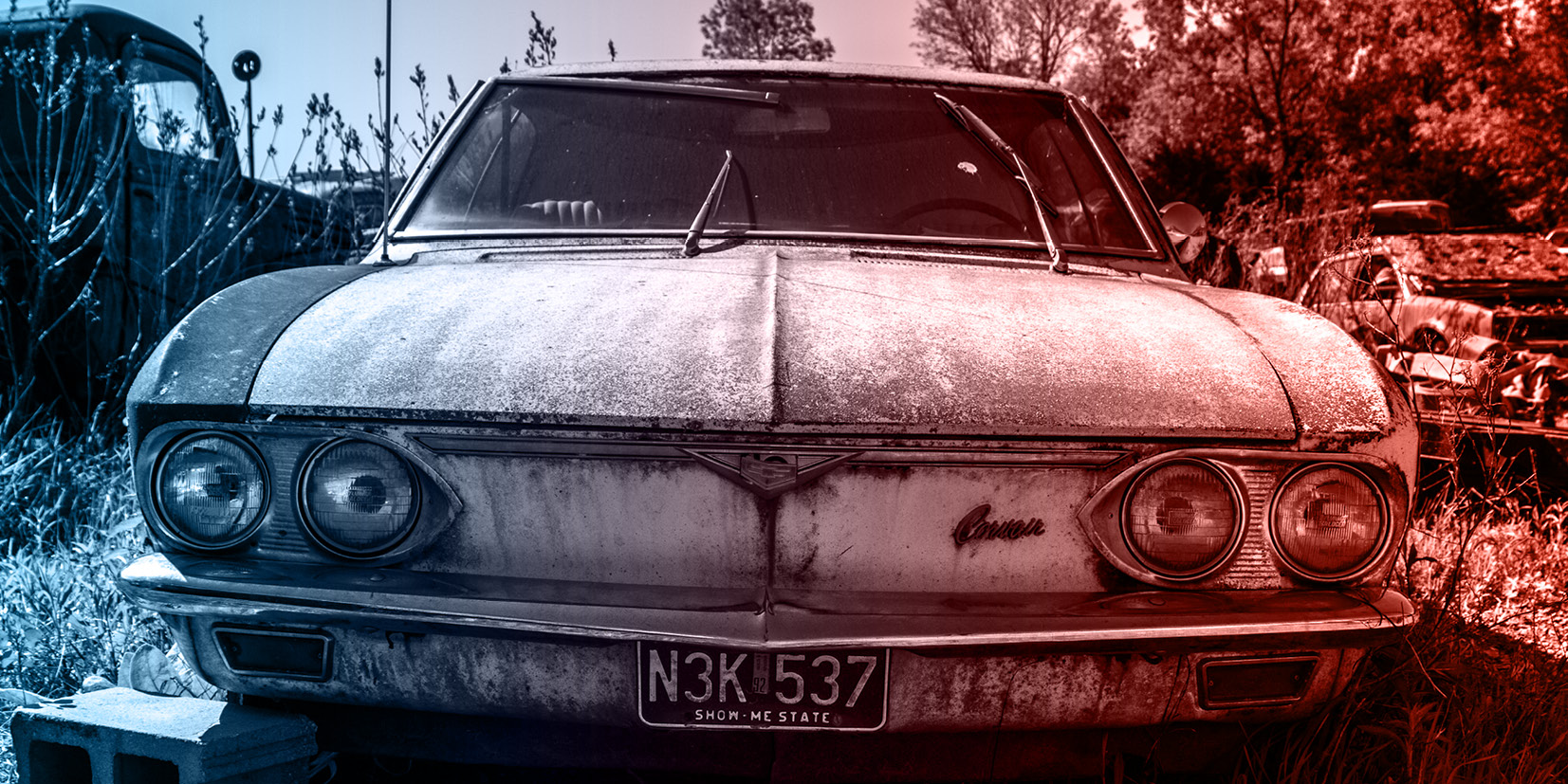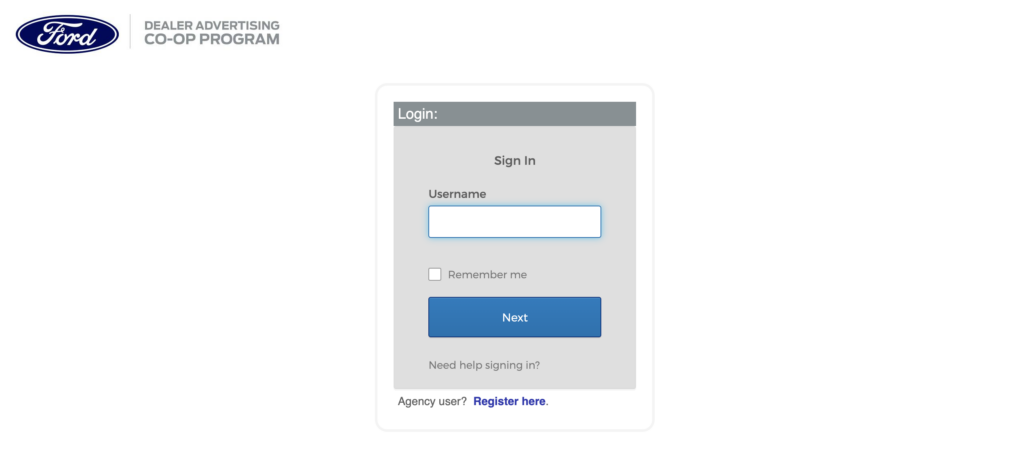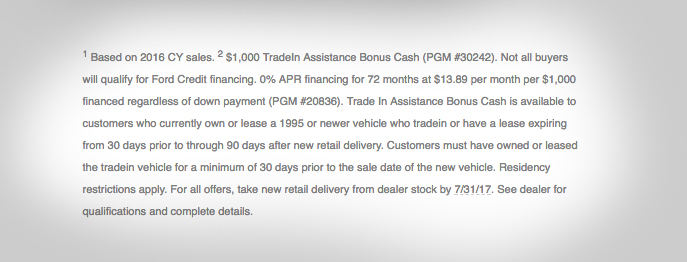
The Future of Automotive Co-Op: A Wish List
Automotive co-op could benefit from an update.
Auto manufacturers rely on an old financial reimbursement system for dealership-level advertising. This system is struggling to adapt to the digital world.
Many dealership managers and marketers bristle at the words “co-op funding.” Why? For most brands, co-op is just plain messy.
Co-op was traditionally an effective system for manufacturers and dealerships to reach more leads via television, radio, and newspapers. Now, it’s changing to accommodate newer (and more effective) forms of marketing, such as SEO, email, and Facebook advertising.
This year, for the first time ever, U.S. companies are expected to spend more on digital media than on television advertising. We think it’s time for national brands to follow suit.

Co-op programs align marketing messages at the local and national level. Dealerships can use a manufacturer’s incentives, logos, copy, and photos to comply with brand standards — and then claim the expense from a nationally pooled fund.
Most new vehicle dealers are allowed to claim a certain amount of co-op funding for each new vehicle they sell. A portion of each sale is kept in the pool, from which it can then be claimed for more qualified advertising expenses.
The main problem with co-op is mis-regulation. A recent survey of auto dealers by Borrell, Inc. showed that 55.2% of auto dealers believe there are too many rules and restrictions for them to participate effectively in co-op programs.
What can we expect from original equipment manufacturers (OEMs) in the future of co-op? How will they adapt?
We’d love to see some changes come to automotive co-op. Here are five co-op improvements we’re looking forward to at 9 Clouds.
1. Easier-to-Use Assets (More Photos, Too!)
From the point of view of an inbound automotive agency, every OEM brand has room to improve its digital asset delivery.
Many brands require an authenticated login system to access libraries of vehicle images, sale event logos, banner designs, and more. Although we marketers appreciate the availability of these assets, the systems that store and deliver them are aging quickly.
GM’s marketing asset site, for instance, has a hodgepodge of an image library that is nearly impossible to search. This is especially frustrating when working on a marketing deadline.
It’s not only a technology issue. OEMs also tend to skimp on the artwork.
For example, while Ford dealerships incentivize the F-150 year-round, the Ford asset site stocks only seven full-resolution images of the current F-150 model. And although “real” photos taken at the dealership tend to perform better in digital advertising, marketers often have to use the OEM’s photos to comply with co-op standards.
Brands that focus marketing energy on their assets and asset delivery systems will give their dealerships and agencies an edge on the competition.
2. Agency-Friendly Brand Standards
Once we automotive marketers have logged in, searched for, and downloaded our marketing assets, we make magic.
That is, we draft up our blog posts, landing pages, emails, ads, banner images, and more using photos and text from the OEM.

Ford’s marketing asset site is about as exciting as it looks (and this is one of the better co-op sites we’ve used).
But it’s more complicated than that. Digital marketers must also jump through hoops for brand standards.
Brand compliance often involves proper presentation of vehicle names, politically correct imagery, and even certain text justifications (we’re looking at you, BMW).
To understand all the automotive co-op rules set up by each OEM, digital marketers need to log into the OEM’s marketing site, find a giant PDF of regulations, and then — for many brands — request pre-approval for co-op reimbursement. Finding these assets and ensuring compliance can be a bit nerve-wracking in a deadline-driven environment.
To be clear: we’re not expecting OEMs to loosen the rules. We just want the rules to be clearer. Help us help you, OEMs!
3. Lawyers to Do the Lawyer-y Stuff
After all the images, fonts, colors, ®s, and ™s are in place, it’s time to disclaim the offers. Yet to write a proper disclaimer, we marketers feel like we need to do everything short of passing a bar exam.
Dealerships need proper disclaimers to not only be legal, but also successfully claim their automotive co-op funds.

This disclaimer is twice as long as the email it is disclaiming, and a marketer is responsible for them both. #ridiculous
For example, here in South Dakota, finance offers require an “amount-per-$1,000” line in the disclaimer: 0.0% APR for 60 months, for example, turns out to be “$18.87 per $1,000 financed.”
Plus, lease incentives also require dealerships to disclaim a myriad of terms, such as:
- Whether or not tax, title, and licensing fees are included in the down payment
- Which in-stock vehicles the offer is based on
- Which OEM incentives are included in the offer
- How lessees must qualify for any included incentives
- How many miles per year the lessee can drive (and per-mile overage charges)
- Much, much more
This checklist drives many digital marketers to their wit’s end on a regular basis.
OEMs could alleviate this issue by providing better legal compliance resources. A copy-and-paste disclaimer could save a ton of time and money for dealerships, agencies, and ultimately the OEM.
4. Performance-Based Reimbursement
Co-op programs are already operating on a merit-based redemption system. Dealers are “rewarded” with more automotive co-op funds with every new sale.
So why not reward high-performing digital work as well?
For example, many co-op programs require only a list of keywords to qualify Google Ads expenses for reimbursement. While this system is simple enough, it’s also not accountable, and it doesn’t reward dealerships for marketing more efficiently.
And while brands such as Ford and Lincoln require a minimum impression share to qualify for automotive co-op, there is virtually no incentive for dealerships to actually improve the way they target digital ads.
Every email open, click, website visit, form submission, test drive, and sale can be tracked electronically. And this tracking technology will only improve in coming years.
We’re hopeful that in the future, OEMs can reward dealerships (and their agencies) for high-performing digital work.
5. Seamless Reimbursement
In an age when we are literally buying coffee with our watches, and riding to work in robot cars, OEMs still require dealers to submit archaic insurance-style claims for co-op reimbursement.
We look forward to a time when co-op reimbursement becomes as automated as a Tesla in Silicon Valley.
Dealers no longer have to worry about filing paperwork for purely digital activities. In fact, with the right integration, OEMs could have a firsthand view of a dealership’s Google Ads account (for example) and then reimburse them automatically based on performance — while still letting the dealership modify ads within brand guidelines.
Seamlessly reimbursing dealerships would effectively cut costs for the OEM. It would also allow the OEM to focus more on providing better assets and delivery systems, rather than simply policing its own cumbersome guidelines.
All of these wish list items may seem idealistic. And as a digital agency, we are a bit biased. Automotive co-op will always be a pain for us.
But it can’t hurt to dream.
What sort of challenges does your dealership face with automotive co-op? What are your pain points?
9 Clouds wants to help you overcome these obstacles, so you can maximize the benefits of OEM funding — and get back to selling cars.
learn how 9 clouds can help you



![Human vs AI A/B Test [Spoiler Alert: Humans Win!]](https://9clouds.com/wp-content/uploads/2024/02/Volvo-dealership-1-600x388.png)


